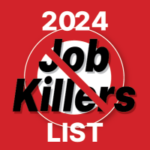
During the pandemic, many brick-and-mortar stores were forced to launch or expand an e-commerce component on the fly. Some businesses may have had little to no online presence before the pandemic, forcing them to pivot quickly to increase cash flow during an unstable time.
As businesses adapt to a “new normal,” online shopping and e-commerce companies are here to stay. Here’s how brick-and-mortar businesses can add e-commerce to their stores.
How to launch your e-commerce operations
The first step to building a robust e-commerce operation is to research and develop your strategy, said Ryan Kelly, VP of Marketing atFedEx. Use
data analytics tools and resources such as McKinsey, Pew Research, and Think with Google to find out more about your target market. Your research should include your target audience’s demographics, the websites and social media platforms they frequent, and when and where they are most likely to shop online.
Next, develop a product and pricing strategy. Conduct a market pricing analysis to determine the appropriate pricing of your prospective products and consider your competitors’ pricing models. Decide how you will position your products in the market to best appeal to your target audience. Then, before creating your website, choose your inventory and decide on the products you’d like to offer online vs. in-store only.
Once you feel confident you know your target audience and the products and prices that suit them, rejuvenate your current website by adding a component for online sales. Make sure your e-commerce platform is mobile-optimized and easy to use. If your business doesn’t have a website, choose a domain name and reputable website hosting service to build it.
Finally, establish a shipping and returns policy that will encourage customers to buy your products. Shipping and return policies are important to online shoppers and can make or break a sale depending on the policy. You could provide discounts on products picked up in-store versus those shipped from your store. There are various strategies to consider when going from offline to online, so choose those that best serve your company’s bottom line.
“I encourage small businesses, especially when they’re … trying to get their name out there and scale, to think about their return policy and their returns expense as a marketing expense,” Kelly said. “One of the biggest things you can do to encourage a consumer to buy from your company if they’ve never heard of your company is to have a return policy that de-risks the transaction.”
Kelly also recommended offering both a subsidized shipping option and a paid shipping option.
“Your [subsidized or free shipping option] should be the cheapest solution possible that still meets the expectations of the recipient, but then offer paid upgrades for a day- and time-definite solution,” he said.
Tips for e-commerce success
Look at your data
According to Kelly, businesses shouldn’t just look at their top-line data without getting into deeper analytics. By only considering general revenue, e-commerce businesses might not know the true profitability of their channels.
“To me, it’s going back, revisiting the data, [and] understanding your different channels,” Kelly said. “So, not just brick and mortar versus online, but online selling direct to consumer versus selling through a marketplace.”
Kelly also identified key questions businesses need to ask themselves.
“If you have limited time in the day and limited resources … where do you put that incremental effort?” he asked. “Where do you put that incremental dollar? It goes back to data [on] profitability.”
One of the biggest things you can do to encourage a consumer to buy from your company if they’ve never heard of your company is to have a return policy that de-risks the transaction.
Ryan Kelly, VP of Marketing, FedEx
Develop a strategy and keep updating it
Strategy is a critical component to developing purposeful goals, especially when launching an e-commerce business alongside your brick-and-mortar store. Kelly stressed that tying data into your strategy, consistently updating your goals, and making fact-based decisions is critical.
“Strategies [and] goals can be updated,” he said. “It’s totally good to be iterative and incorporate … more data [to] force you to revise your goals or to reprioritize initiatives that you might be undertaking.”
Tune out the ‘hype’
Kelly recommends ignoring all the “hype” from other businesses that might have a different strategy or be further along in the e-commerce space than you.
“Who are you competing with?” Kelly asked. “Are you competing with [e-commerce giants] to win the sale? Or are you just competing with the experience and expectations that they have laid out?”
As an example, businesses should understand the trade-off between fast and free shipping. While there might be “hype” around overnight or two-day shipping, it is not always the top choice for consumers, especially if that means they’ll be paying extra. Know who you are competing against and who you want to be as an online retailer. You do not have to follow the same strategies as e-commerce giants — remember, a majority of smaller e-commerce retailers fall within a three- to five-day range for click-to-door time.
How FedEx can help brick-and-mortar stores expand into e-commerce
If you’re searching for the best way to ship products purchased from your e-commerce site, FedEx has multiple ways for small businesses to save with eligible discounts, My FedEx Rewards, and more.
“I’d say when it comes to shipping … [FedEx] provides leading services for direct-to-consumer business,” Kelly said. “FedEx Home Delivery is our flagship product for delivering to residences.”
FedEx also holds opportunities for brick-and-mortar businesses to learn directly from other small and medium businesses. FedEx offers a variety of business communities and advisory boards including the entrepreneurial advisory board, Tech Chat, Small Business Resource Center, and the e-commerce customer advisory board. Through these initiatives, the FedEx small business community can open the door for other businesses to engage with one another, share best practices, and seek advice as they face similar challenges and opportunities
“One of the biggest things that our customers look to us for is what other people are doing,” Kelly said. “They’re like, ‘You deal with a lot of small businesses — How do they solve problem X?’ … So, there’s this FedEx community where we’re sharing best practices or what worked for one company [that might also] work for your company.”
Looking to take your brick-and-mortar store online? Learn more about FedEx’s shippingservices for small businesses.
Subscribe to our newsletter, Midnight Oil
Expert business advice, news, and trends, delivered weekly
By signing up you agree to the CO—
Privacy Policy. You can opt out anytime.
Published January 12, 2023








